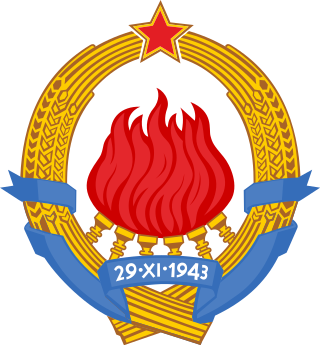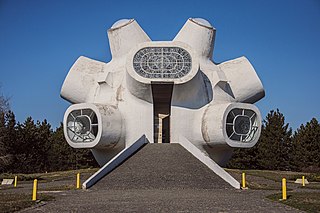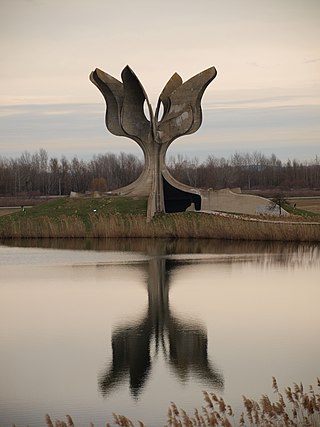List of World War II monuments and memorials in the Montenegro represent Yugoslav monuments and memorials built on the territory of the present day Montenegro.
| Image | Name | Location | Notes |
|---|---|---|---|
 | Monument to the partisan soldier | Podgorica | Designed by Drago Đurović and Vojislav Đokić, built in 1957. Dedicated to 97 People's heroes of Montenegro |
| Partisan graveyard in Breza | Breza | Designed by Momčilo Vujisić, built in 1974. Dedicated to fallen fighters of the Yugoslav Front. | |
 | Monument to Freedom | Berane | Designed by Bogdan Bogdanović, and opened in 1977. Located on Jasikovac hill, on the outskirts of the town. |
| Partisan graveyard in Podbišće | Podbišće | Dedicated to fallen fighters of the Yugoslav Front. | |
| Memorial graveyard in Cijevna | Cijevna | Dedicated to fallen fighters of the Yugoslav Front. | |
 | Memorial park to the Uprising and the Revolution | Grahovo | Designed by Miodrag Živković, built in 1978. Dedicated to fallen fighters of the Yugoslav Front. |
| Monument to fallen fighters | Bijelo Polje | Dedicated to fallen fighters of the Yugoslav Front. | |
| Monument to fallen fighters | Brajići | Designed by Stevan Luketić, dedicated to fallen fighters of the 1875-1918 liberation wars and the Yugoslav Front. | |
| Monument to fallen fighters | Brskut | Dedicated to fallen fighters of the Balkan wars and the Yugoslav Front. | |
| Monument to fallen fighters | Godinje | Dedicated to fallen fighters of the Yugoslav Front. | |
 | Monument to fallen fighters | Danilovgrad | Designed by Drago Đurović and Mirko Đokić. Dedicated to fallen fighters of the Yugoslav Front. |
| Monument to fallen fighters | Kolašin | Designed by Vojin Bakić, built in 1949. Dedicated to fallen fighters of the Yugoslav Front. | |
| Monument to the Revolution | Virpazar | Designed by Mirko Ostoja. Dedicated to fallen fighters of the Yugoslav Front. | |
| Monument to fallen patriots | Nikšić | Designed by Bogdan Bogdanović. Dedicated to 32 anti-fascists and patriots shot by the occupiers on Trebjesa hill | |
 | Memorial to the liberation of Herceg Novi | Herceg Novi | |
 | Monument to the People's Hero of Yugoslavia Nikola Đurković in Herceg Novi. | Herceg Novi | |
 | Monument for heroes fallen for freedom | Kotor |




